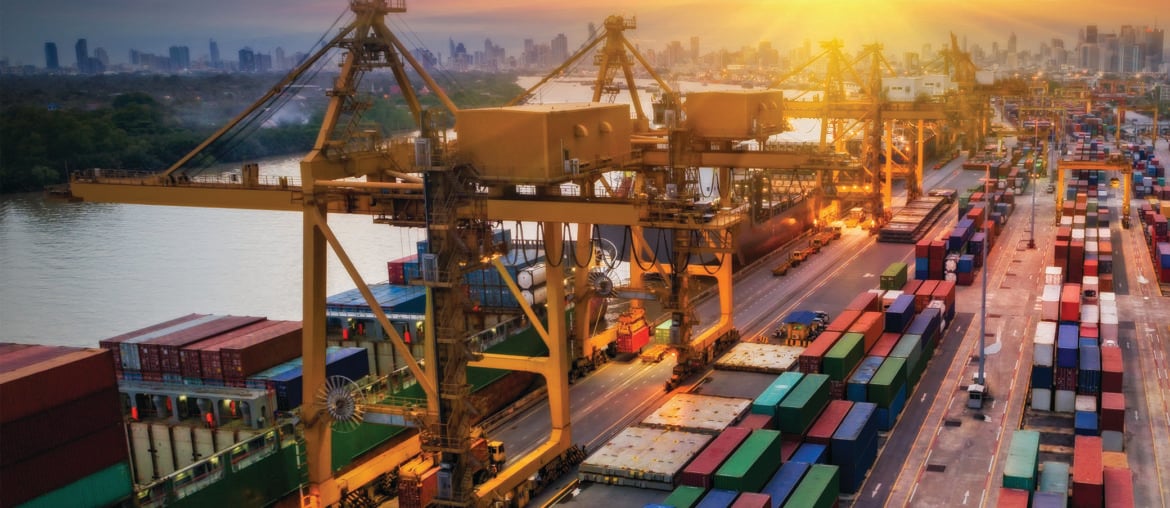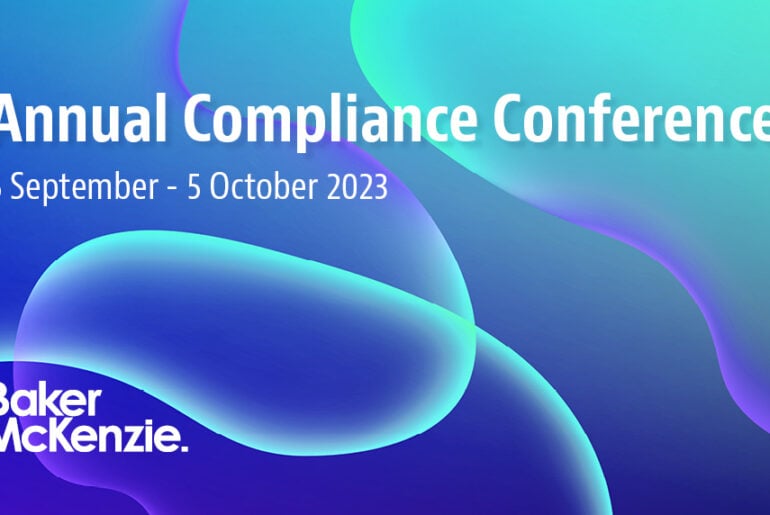Given recent global events, it goes without saying that supply chains have been tested in recent months. Designing a resilient supply chain is the key to not only weathering the current pandemic, but also to overcoming future unexpected disruptions. In the current pandemic-induced crisis, the disruptions may be geographic (e.g., factories/plants shut down in certain geographic locales, making sourcing difficult or impossible). But there may also be disruptions based on trade-related developments (e.g., increased tariffs, sanctions, etc.), policy-related developments (e.g., risks of supply chain links to entities engaging in human rights abuses as described in our prior blog post here), or the result of natural disaster, among others.
These disruptions present numerous risks. From a trade compliance perspective, they may lead to greater exposure to sanctioned parties, materials sourced from sanctioned countries, or higher-risk shipping routes. From a commercial perspective, companies may have reviewed their Force Majeure clauses for the first time since negotiating a contract in order to determine what their options or remedies were for the disruption. But the disruptions may also present opportunities. From a commercial and contractual perspective, this disruption provides companies an opportunity to review their supply chain from the ground up, including the evaluation of supplier location for operational, tax, legal and trade considerations. In this blog post, we identify three keys to supply chain resilience in challenging times and offer considerations to bolster contractual protections and mitigate trade-related compliance risks that can arise from unexpected disruptions at each step of the upstream supply chain.
Keys to Supply Chain Resilience
- Rethink each aspect of the supply chain lifecycle to identify disruption-related risks and opportunities to mitigate the risks.
The first step in optimizing your upstream supply chain starts with identifying the risks to your supply chain in the face of a major disruption. Below are some of the key trade compliance and commercial considerations at each step of the supply chain lifecycle.
- Step 1: Supplier Identification.
- Trade-Related Compliance Considerations. Shifting a supply chain can involve doing business with unknown third parties in new markets or geographic locales. In emergent situations, the need for changes can arise without notice, increasing the risk of engaging new partners without the enhanced due diligence that may be warranted. This can expose companies to sanctions risks, e.g., for dealing with parties on the List of Specially Designated Nationals and Blocked Persons (“SDN List”) or in sanctioned countries. Supply chain disruptions can also force upstream suppliers to source raw materials from new regions or sources. Consider whether the sourcing is problematic from a sanctions perspective (i.e., from where are the raw materials being sourced? Using what human resources?) Also consider whether newly-sourced raw materials or components will impact the jurisdictional analysis of the finished product from an export controls perspective (i.e., will it bring a non-US product under US jurisdiction?).
- Commercial Considerations. Sophisticated companies have supply chain programs that include a review of many critical aspects of a potential supplier, including production capabilities, quality, reputation, and cost. However, the fallout from the pandemic is an opportunity to recalibrate your supply chain and evaluate additional considerations that may not traditionally factor into the decision to work with a particular supplier. While companies may have chosen certain geographic regions or markets for cost considerations in the past, some found that having all of their production in one geographic region created bottlenecks or a complete stoppage in availability of product during the height of the pandemic. In order to avoid this situation, companies should evaluate whether to diversify their supplier locations, including reshoring some percentage of that production or pivoting to locations closer to their customers. There may be opportunities to optimize tax and trade regulation considerations in diversifying the supplier locations.
- Step 2: Supplier Qualification.
- Trade-Related Compliance Considerations. Now is the time to conduct thorough due diligence on new parties to the supply chain. This may include a review of parties’ ownership, geographic operations, sourcing practices, among other issues. The Treasury Department’s Office of Foreign Assets Control (“OFAC”) identifies in its Compliance Framework improper or incomplete due diligence as a root cause of compliance program breakdowns. Cutting corners on supply chain is inadvisable, even amidst unexpected disruptions.
- Commercial Considerations. Companies have just weathered one of the biggest stressors in the past century. Some have come through this pandemic better than others, but evidence of the financial and operational disruption of supply chains was evident everywhere in the news, as well as directly in people’s personal and professional lives. As noted above, thorough due diligence is always prudent, but it is more important than ever. It is essential to understand the financial status of a potential supplier (and current suppliers, for that matter). For example, as a result of the pandemic, are there new loan defaults which could jeopardize the viability of the supplier’s production facility through foreclosure on real estate or repossession of key manufacturing equipment? Operational due diligence is equally as important. Does the supplier have strong workforce management, including appropriate protective measures to keep the workforce healthy? Is the supplier adhering to any industry self-regulation or other agreements responsive to pandemic-related matters? What security protocols does the supplier have in place to protect your confidential and proprietary information with a remote workforce?
- Step 3: Supplier Review and Selection.
- Trade-Related Compliance Considerations. Once the supplier has been identified and diligenced, it is important to identify the supplier’s trade compliance obligations at the outset of negotiations. This may mean incorporating robust trade compliance provisions into any contracts with the potential supplier and ensuring that they are obligated to pass them up the supply chain.
- Contractual Considerations. A typical, large manufacturer can have two hundred to two hundred fifty tier one suppliers, which can translate into 10,000 to 15,000 tier two and tier three suppliers in that company’s system. This extension to tier two and tier three suppliers creates operational, reputational and compliance risks. Before finalizing an agreement with a supplier, it will be necessary to understand the depth of this extended enterprise, the various risks involved with these tier two and three suppliers, and the appropriate scope of diligence for the undertaking with a new supplier. The same considerations for tier one suppliers can apply to tier two and three suppliers, as they equally have the power to disrupt availability of supply.
- Step 4: Supplier Onboarding.
- Trade-Related Compliance Considerations. With the contract in place, it is time to onboard your new supplier. Consider incorporating a training on trade compliance obligations, including sanctions, export controls, imports, and other key compliance areas. In some instances, depending on the scale of the relationship, it may be appropriate to work with your supplier to ensure that they have internal compliance policies and procedures in place to mitigate potential trade compliance violations.
- Commercial Considerations. Maintaining strong communications with a supplier is essential for a successful relationship. In these uncertain times, it is important to assess and then monitor the supplier’s business continuity plan and operational stability. Your contract should address these key concepts, but it is important to have initial and ongoing dialogues about the parties’ performance expectations throughout the relationship. Consider whether business reviews or setting forth an informal process for resolving issues are important for the success of the relationship, and how that gets documented in your agreement.
- Step 5: Supplier Performance Management.
- Trade Compliance Considerations. Auditing your supplier’s trade compliance policies and procedures can help to mitigate the potential for violations. Re-screening your supplier’s upstream suppliers, owners, and other key stakeholders on a regular basis is also crucial to flag the involvement of any restricted parties. Finally, incorporating training or re-training on key trade compliance issues throughout the relationship can be another helpful compliance strategy.
- Commercial Considerations. Trust but verify. The pandemic has put a strain on companies’ ability to conduct in-person inspections and audits of their supply chain partners. Consider whether your existing contract does, or future contract should, provide for the ability to conduct virtual audits and inspections when in-person reviews are not possible due to travel restrictions, health considerations or other barriers. Is there technology that is permitted by applicable law which allows you to monitor the performance of your suppliers? While virtual inspections or audits may not be as efficient or productive as in-person options, it can still provide a window into whether your supplier is following basic steps to protect their workforce, for example.
- Step 6: Supplier Risk Management.
- Trade Compliance Considerations. As the trade compliance landscape evolves, keep track of any potential risk-related touchpoints with your supplier. Does the supplier have factories in higher-risk geographic locales? Have new risk factors been identified with their raw material sourcing or workforce? Staying on top of these issues and taking steps to address them can help to avoid surprises or rushed decisions that leave room for error.
- Commercial Considerations. Agile companies perform better. Strong contracts permit a company to take the necessary steps to course-correct when needed. Have the in-person or virtual inspections revealed material issues that need to be addressed immediately or are there immaterial opportunities that need to be improved? What do the applicable laws and the contract permit with respect to pausing or decreasing the quantities purchased until the issue is addressed or terminating the contract if the issues are significant enough to warrant that step? There may be local laws which supersede any contractual termination rights and the parties should understand those requirements before entering into the agreement and again at the time the party seeks to modify or terminate an agreement.
- Step 7: Supplier Relationship Management.
- Trade Compliance Considerations. Because of the nature of trade compliance laws, such as US sanctions laws or US export controls laws, and the potential theories of liability under these laws, the interests of your organization and your suppliers will generally be aligned. As a result, you will want to work together to formulate risk mitigation strategies. Nonetheless, you will want to ensure that there are mechanisms in place that allow you to terminate suppliers who fail to satisfy their obligations or place your organization at risk. In some instances, termination may itself give rise to compliance issues, so it is important to seek expert legal advice in the event that trade compliance issues arise.
- Commercial Considerations. Consider whether data-driven relationship management will be effective and efficient for your company and its suppliers. While there may be significant upfront costs in implementing predictive analytics, demand management, and financial management technology, the efficiencies these technologies provide, especially in the midst of a crisis may be the key to maintaining your supply chain. This is true whether for a pandemic, geopolitical issue, or extreme weather event, and may be the difference between availability or cessation of supply.
- Step 8: Supplier Offboarding.
- Trade Compliance Considerations. As the relationship is approaching its conclusion, consider what actions need to be taken to terminate the supplier with minimal or no disruption. The specific actions your organization can take will depend on the reasons for terminating the supplier. For example, in the extreme scenario that your supplier has been designated on the SDN List, your organization may be unable to wind-down its activities with the supplier, settle outstanding debts, etc. Consider your trade compliance obligations in terminating your relationship with the supplier to ensure you do not run afoul of them.
- Commercial Considerations. The time to think about supplier offboarding is before you enter into an agreement with a supplier. All of the considerations discussed above (and more) will determine how efficiently and successfully you transition a supplier out of your system. How do the local laws and contract impact offboarding, including employment considerations, notice requirements, and the potential for wrongful termination claims. If this is a long-term agreement with a supplier, your company should seek expert legal advice to determine whether the applicable laws have changed over the past decade (or longer), which may impact how the offboarding is implemented, notwithstanding what the smartly drafted contract may provide.
2. Balance drive for cost reductions with considerations for value creation, compliance and management of uncertainty.
While it may be tempting to pivot quickly to the supply chain solution that makes the most business sense, it is crucial to take the time to make a compliance and legal risk-based decision, taking into account the potential exposures to legal and trade compliance risks.
A risk-based assessment will consider both the business rationale for a particular change in supply chain against the potential exposure to liability under applicable trade compliance laws. For example, if the shift involves pivoting to an entirely unknown supplier, take the time to thoroughly evaluate and onboard the supplier. Consider issues that include the supplier’s ownership, its global operations, and its workforce. Are there any import or export restrictions that could impact sourcing from this new supplier? Are there tax considerations which weigh in favor of choosing one supplier over another? Do local laws impact termination rights in the event the relationship sours?
3. Identify and analyze jurisdiction-specific opportunities such as tax optimization, government support, termination flexibility, and supply chain security.
Changes to supply chain can also present opportunities. For example, they may allow parties to exit contracts that are high-risk or unfavorable and replace them with suppliers in more favorable jurisdictions.
Emergent situations can force companies to reevaluate their upstream supply chains and to insulate them from potential exposure to trade and operational risk. For example, a forced supply chain change may present the opportunity to consider the overall impact and trajectories of US sanctions against particular jurisdictions. Perhaps the region has been the target of increasing sanctions, such as numerous SDN designations, or there has been a regime change that has elicited new sanctions or export restrictions. Now is the time to consider whether there are alternative suppliers that present less risk.





